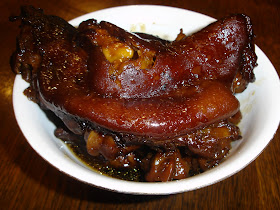
The unexpected early winter frost had not only created havoc to our herb garden but also caused us to make frequent trips to the fresh produces market. Last weekend, we bee-dived to our favourite vegetables stall as we were running late. We managed to get there before the stall owner packed up to go home. To our surprise, he had set aside a kilo bag of fresh peppercorns and literally given to us for free. He simply added a dollar to the our total payment of the other items we have bought from the stall. "Isn't that a classic peppercorn payment" I told him. We thanked him and he jokingly brushed it away by saying " I can't sell them fresh next weekend and furthermore, I do not know how to use them in my cooking". "Neither do I but I'll plant them instead" I said in reply and walking away with a thought of what am I going to do with it. Although, peppercorn is found in most kitchen and is the most commonest spice used in cooking, it may be hard to believe it was once so valuable that it was used as currency.
I have not seen fresh peppercorn until now. My first priority is to learn how to grow them in my herb garden although conventional wisdom suggests that the best black peppercorns are the Malabar pepper hailing from India’s Malabar Coast which I can easily buy from the local spice shop is a better bet than germinating these berries. I know this plant only thrive in tropical climates and for those who live in colder climates, peppercorn plant does well when grown in containers moved inside during the cold months. I have inevitably taken the challenge to look after these plants and hopefully guarding them against any future winter frost and keeping you posted in the process.




